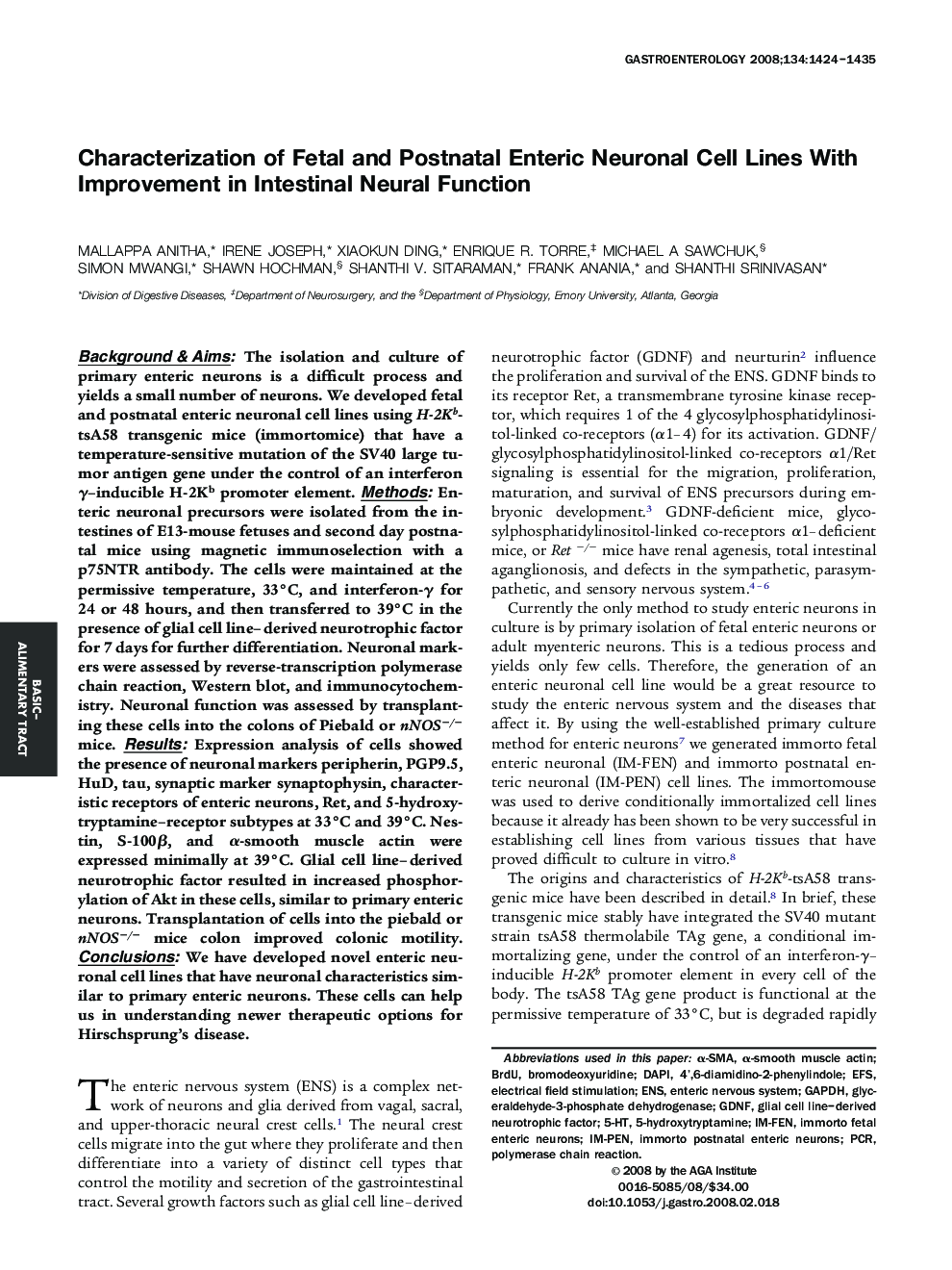| Article ID | Journal | Published Year | Pages | File Type |
|---|---|---|---|---|
| 6096897 | Gastroenterology | 2008 | 12 Pages |
Abstract
Background & Aims: The isolation and culture of primary enteric neurons is a difficult process and yields a small number of neurons. We developed fetal and postnatal enteric neuronal cell lines using H-2Kb-tsA58 transgenic mice (immortomice) that have a temperature-sensitive mutation of the SV40 large tumor antigen gene under the control of an interferon γ-inducible H-2Kb promoter element. Methods: Enteric neuronal precursors were isolated from the intestines of E13-mouse fetuses and second day postnatal mice using magnetic immunoselection with a p75NTR antibody. The cells were maintained at the permissive temperature, 33°C, and interferon-γ for 24 or 48 hours, and then transferred to 39°C in the presence of glial cell line-derived neurotrophic factor for 7 days for further differentiation. Neuronal markers were assessed by reverse-transcription polymerase chain reaction, Western blot, and immunocytochemistry. Neuronal function was assessed by transplanting these cells into the colons of Piebald or nNOSâ/â mice. Results: Expression analysis of cells showed the presence of neuronal markers peripherin, PGP9.5, HuD, tau, synaptic marker synaptophysin, characteristic receptors of enteric neurons, Ret, and 5-hydroxytryptamine-receptor subtypes at 33°C and 39°C. Nestin, S-100β, and α-smooth muscle actin were expressed minimally at 39°C. Glial cell line-derived neurotrophic factor resulted in increased phosphorylation of Akt in these cells, similar to primary enteric neurons. Transplantation of cells into the piebald or nNOSâ/â mice colon improved colonic motility. Conclusions: We have developed novel enteric neuronal cell lines that have neuronal characteristics similar to primary enteric neurons. These cells can help us in understanding newer therapeutic options for Hirschsprung's disease.
Keywords
Related Topics
Health Sciences
Medicine and Dentistry
Gastroenterology
Authors
Mallappa Anitha, Irene Joseph, Xiaokun Ding, Enrique R. Torre, Michael A. Sawchuk, Simon Mwangi, Shawn Hochman, Shanthi V. Sitaraman, Frank Anania, Shanthi Srinivasan,
